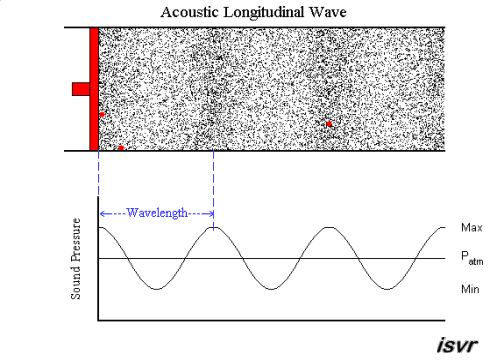|
Sound is produced when the
air or any other elastic medium (that can be compressed) is set into
motion by any means that creates a small alteration in pressure, particle
displacement or particle velocity which is propagated in the medium. For
instance, sound waves may be produced by the sounding board of a piano,
the diaphragm of a loudspeaker or the human voice. In every cases, sound
waves are characterized by small pressure variations of the atmosphere.
Sound waves
are longitudinal waves.
Let consider sound waves generated in an air
column by
a piston. We can see that the particles move back and forth about their
equilibrium position, thus creating alternating zones of compression and
rarefaction. In the rarefaction pulse, the pressure is below the
normal undisturbed atmospheric pressure, and in the compression pulse, the
pressure is above the normal undisturbed atmospheric pressure, as
shown in the animation below.

The local oscillations of
the air particles always move in the same direction as the disturbance.
Unlike transverse waves like electromagnetic waves, longitudinal waves
like sound waves cannot be polarized. The polarization of a wave is given
by the orientation of oscillations in space with respect to the disturbed
medium. A polarized wave vibrates in a single plane in space. Since sound
waves vibrate along their direction of propagation, they cannot be
polarized.
Sound waves
cannot be polarized.
Typically, sound waves propagate in air at room temperature at about 340 meters per second,
that is
v
= 340 m/s. The range of frequencies audible to human ears lies between
about 20 and 20,000 cycles per second (20 Hz to 20 kHz). The sounds perceived by human ears have wavelength between
roughly 17 mm (at 20 kHz) and 17 m (at 20 Hz). We will see later in this
section the relation between wavelength, frequency and velocity of a
wave.
The following animation
shows an example of sound waves generated by a baffled loudspeaker. Red
areas correspond to high pressure levels whereas blue areas correspond to
low pressure levels. If you mouse over the animation, you can visualize a
graph of sound pressure levels vs. distance from the source.

|